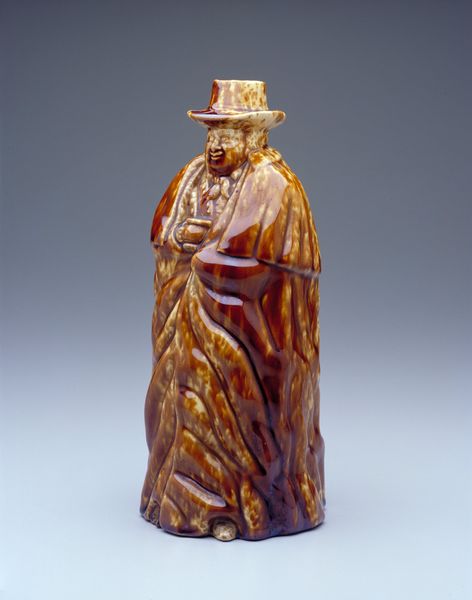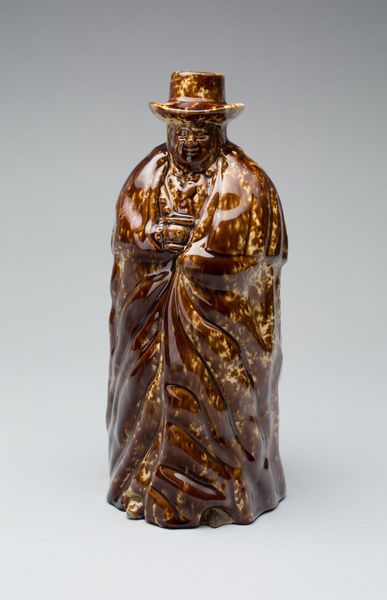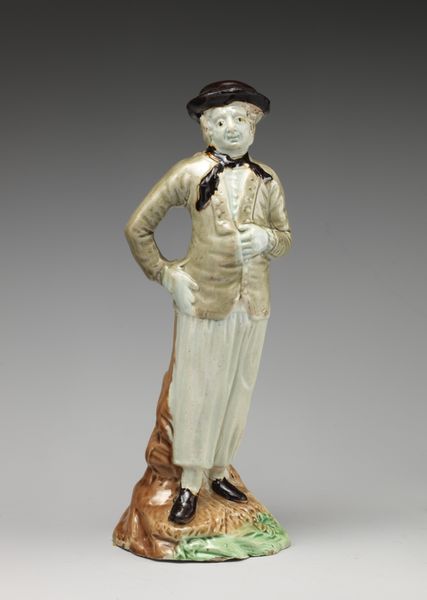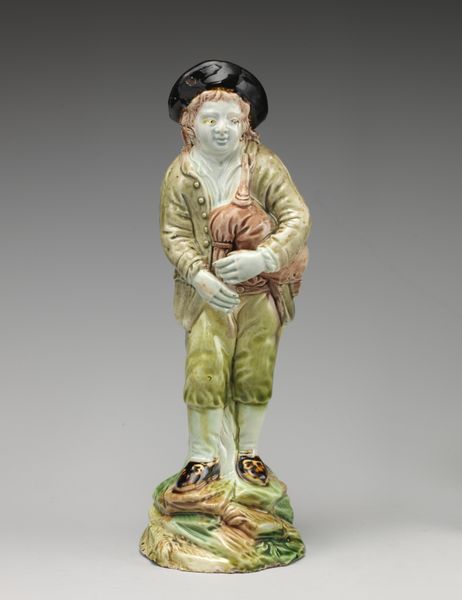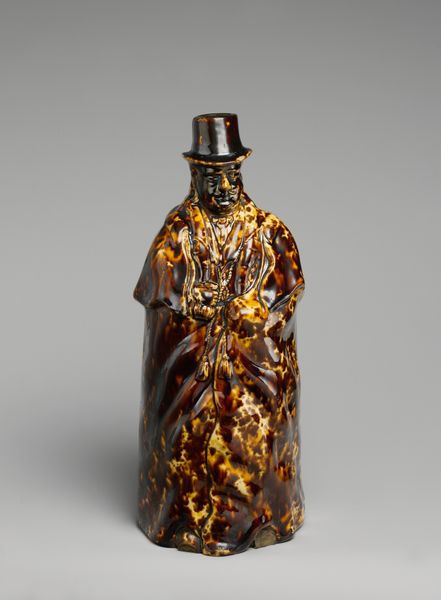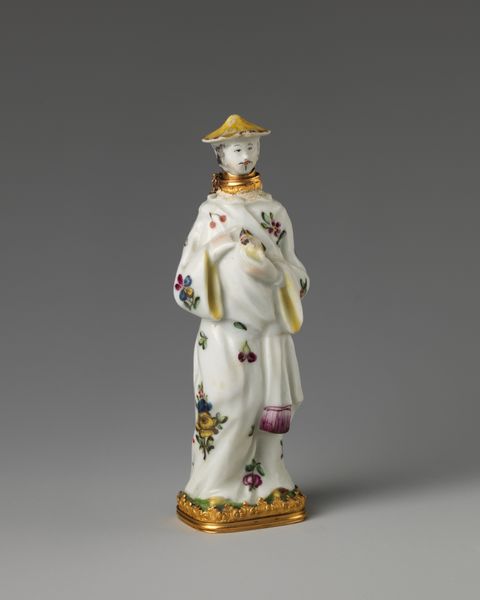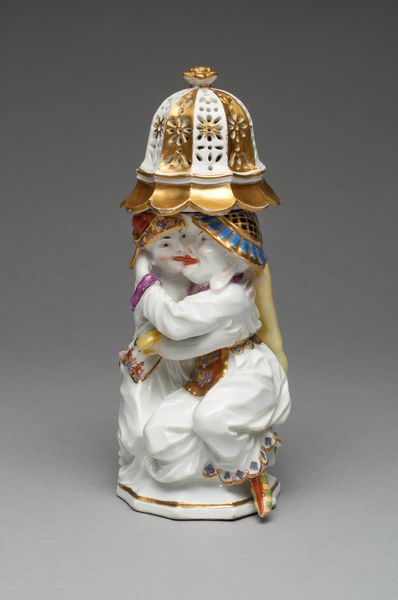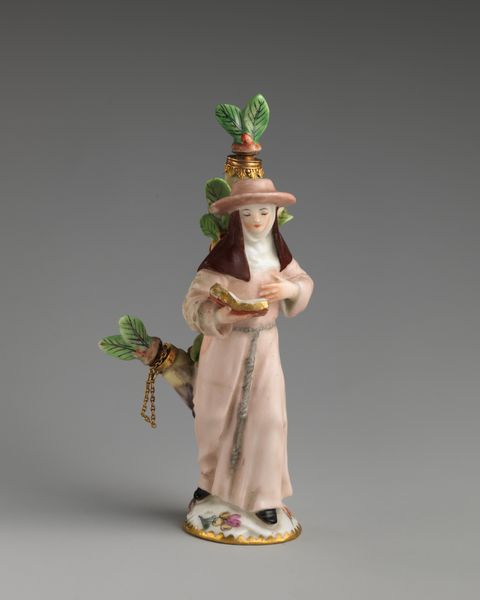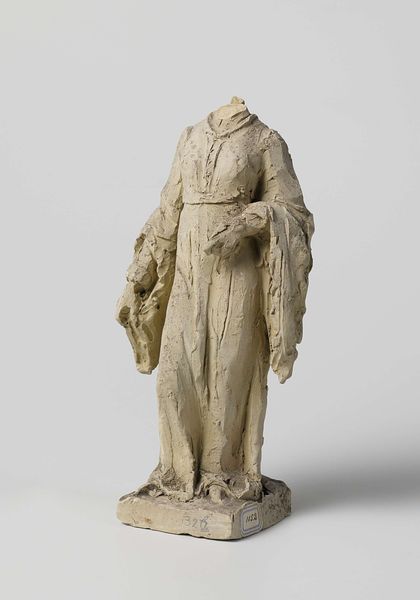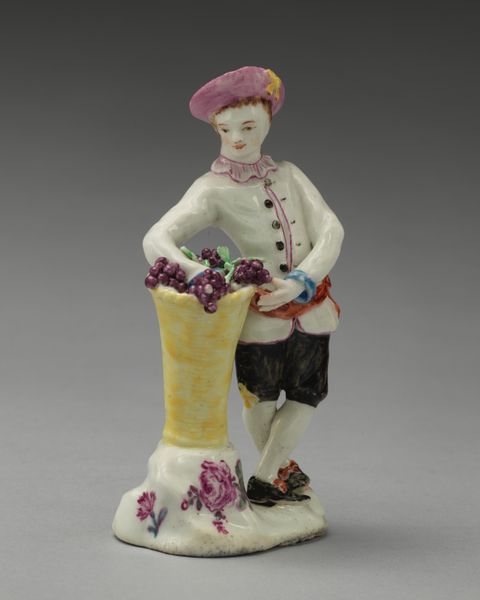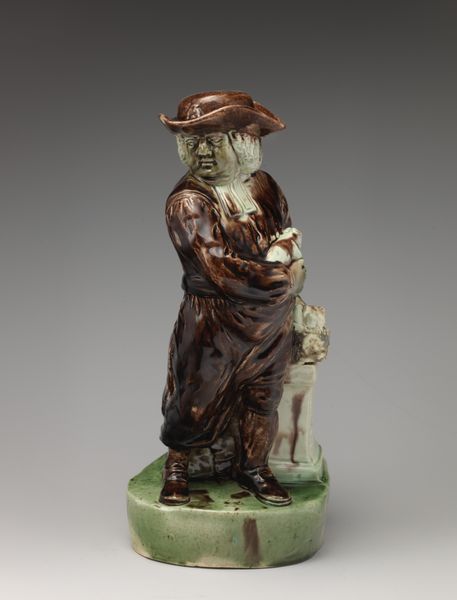
ceramic, sculpture
#
ceramic
#
figuration
#
stoneware
#
sculpture
#
ceramic
Dimensions: H. 10 3/4 in. (27.3 cm)
Copyright: Public Domain
Curator: What strikes me immediately about this ceramic bottle, made sometime between 1846 and 1858 by Daniel Greatbatch, is the interplay of representation and utility. Editor: Yes, it's unusual isn't it? A utilitarian object disguised as a dignitary of some kind. It has a solidity that makes me think of stoneware, with this mottled glaze like a geological formation. Curator: Indeed. Thinking about its construction reveals so much about its cultural context. Here we have a bottle, formed in the shape of a male figure in what seems to be formal attire and topped with a small top hat for a stopper, pointing towards specific roles and power dynamics during its era of creation. It certainly invites contemplation on what constitutes authority. Editor: Absolutely. I'm also thinking about the means of production: How many bottles like this were made? What was the social position of the people creating them, and who bought them? The ceramic itself isn't a precious material. Curator: Great questions to ask! This stoneware speaks to me about the visual culture that elevated the bourgeois male at the time, especially in Anglo-American societies. He has become a thing; an object one possesses in one's home like the many figurines produced in Staffordshire at the time that visually reinforced social norms and hierarchies. Editor: I see your point; however, the functionality transforms it further, doesn't it? A decorative yet useful object. It almost mocks the man it’s representing; its contents destined to be consumed, making him more a vessel than a person. Curator: Perhaps! Although I am reminded that during the Victorian Era there was a deep concern about the perceived excess of modernity. The representation of bourgeois characters in functional decorative objects, could thus underscore how material wealth can come to define individuals. Editor: The question remains: who consumed both its contents and its message? Perhaps the answer reveals just how blurred the lines are between material, method, meaning, class and consumption. Curator: Yes, and what at first seems merely a decorative bottle, actually opens onto far more intricate discussions about personhood, societal critique, and commodification during the Industrial Revolution. Editor: A potent distillation, indeed! This ceramic bottle contains more complexity than meets the eye.
Comments
No comments
Be the first to comment and join the conversation on the ultimate creative platform.


